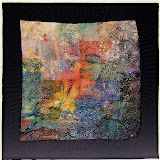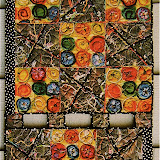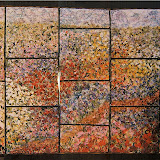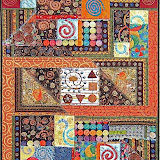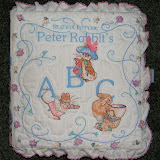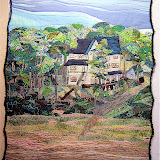These are just a few of the 93 quilts in the show that ends today. They're the ones that caught my eye and I had my camera at the ready. Some of them are new ... some have history.

Crazy Quilt circa 1890's
owned by Mary Bates
That is the quilt being delivered to the show when I submitted my entries.

Old and New
left - "Hope Chest Crazy Quilt" by Alice Summers
right - ""Tennessee Waltz" by Chris Windham

Our Mayor Eddy Ford's baby quilt made by his grandmother and aunts.

From Friends To Pearl
A friendship quilt made for a Philadelphia, Penn. girl's 16th birthday in 1891. Owned by Elizabeth Jamison.

Seeing all these quilts featuring sunbonnet Sue and sweet Sue together, I just had to take a picture.

"Girlfriends" by Sharon Slagle
This man apologized for walking into the photo. I was pleased to see quite a few men at the show, including my own husband. Quite a few of them were making the rounds on their own.

#77 - Arizona Inspired by Dawn Sullivan
#24- Texas Panhandle Iris by Kip Ford
#25- Mariner's Compass Leads the Way to Outer Space by Kip Ford
#75- Bold Bow Ties by Sue Edwards
#40- Love Makes My Heart Soar by Deborah Pulsford
#41- Italian Memories by Deborah Puslford

"Catch A Falling Star" by Lynda Wallace

"Letters To Home" by Margaret Murray-Evans
The above quilt is based on the Civil War themed show performed by the Farragut High School Band during the fall of 2004. Machine pieced and quilted, the quilt consists of b&w as well as colored photos taken by the maker. The photos were blown-up or reduced, printed on fabric and then cut and pieced with cotton fabrics in the colors of blue (North) and grey (South). The design is based on a formation used in the band drill charts for the show. The quilt includes alphabet charms, various button, guitar picks, clarinet reeds dyed with black ink, a guitar bridge and guitar string knobs.
PS: This concerns the web cam for the channel on Lake Michigan that's in my sidebar. If you see large equipment with cranes and stuff, the Corp of Engineers is pumping sand out of the channel to prepare for the shipping season. This year the public beach on the north side of the channel gets that beautiful, clean, fine sand. Last year it was pumped on our side.







































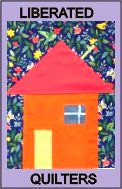 Fabric Bird Sculpture Pattern
Fabric Bird Sculpture Pattern




